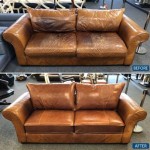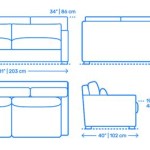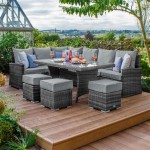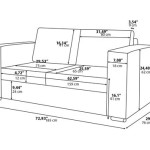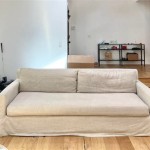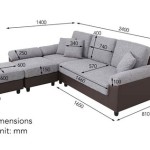Decoding the Multifaceted World of Japanese Sofa Beds: Exploring Alternative Terminology
The Japanese sofa bed, a versatile piece of furniture blending seating and sleeping functionality, is known by various alternative names depending on geographical location, design nuances, and specific features. This article will explore the diverse terminology associated with Japanese sofa beds, providing a comprehensive overview of the equivalent terms and the subtle differences they may imply.
Understanding these alternative names is crucial for effective communication when purchasing or discussing these space-saving furniture solutions. It allows for a more nuanced search and a clearer understanding of the specific type of sofa bed being considered. This exploration encompasses terms used in different regions, those emphasizing particular design styles, and those highlighting specific functional aspects.
Futon Sofa: Highlighting the Traditional Foundation
One of the most prevalent alternative names for a Japanese sofa bed is "futon sofa." This term directly references the traditional Japanese futon, a padded mattress and quilt set traditionally laid directly on tatami mats for sleeping. A futon sofa, therefore, signifies a sofa bed that utilizes a futon-style mattress as its sleeping surface. This term emphasizes the connection to traditional Japanese sleeping arrangements and the comfort associated with a futon mattress.
While the term "futon" itself technically refers to the bedding, its association with the sleeping experience makes "futon sofa" a readily understandable substitute. This term is particularly common in Western markets where the concept of a traditional Japanese futon is more widely recognized than perhaps the precise architectural definition of a Japanese sofa bed. Futon sofas are often characterized by their simplicity and focus on comfort, reflecting the minimalist aesthetic of traditional Japanese design.
The frame of a futon sofa can vary, ranging from simple wooden frames to more elaborate metal structures. The key element that defines it as a "futon sofa" is the presence of the futon mattress. These mattresses are typically made of cotton, foam, or a combination of materials, offering a comfortable and supportive sleeping surface. The futon sofa design often prioritizes ease of conversion between sofa and bed configurations, typically involving a simple folding or unfolding mechanism.
Convertible Sofa: Emphasizing the Functional Transformation
The term "convertible sofa" offers a broader and more general alternative name for a Japanese sofa bed. This term highlights the core functionality of the furniture: its ability to convert from a seating arrangement into a sleeping surface. While not exclusively applied to Japanese sofa beds, "convertible sofa" accurately describes their primary characteristic and is thus frequently used interchangeably. This term is particularly useful when searching for furniture with this specific function, regardless of its origin or specific design.
The term "convertible sofa" can encompass a wide range of designs and mechanisms. This highlights the importance of further specifications when using this term to find a particular type of sofa bed. It is essential to consider factors such as the size of the sleeping surface, the type of mattress used, and the ease of conversion when evaluating a convertible sofa. The universal nature of the term "convertible sofa" makes it a popular choice for retailers and consumers alike in describing the primary function of these adaptable furniture pieces.
However, it is important to note that "convertible sofa" lacks the specific cultural connotation associated with terms like "futon sofa" or other more design-specific names. It simply focuses on the functional aspect of transformation. This makes it an accessible term for a wider audience but also requires more detailed descriptions to identify a Japanese-style sofa bed specifically.
Japanese Style Daybed : Underscoring the Versatile Design
While not always a direct synonym, "Japanese style daybed," can sometimes serve as an alternative name for a Japanese sofa bed, particularly when the design emphasizes a low profile, minimalist aesthetic, and multi-functional use. The term "daybed" inherently suggests a piece of furniture suitable for both sitting and reclining during the day, often with the potential to be used as a bed at night. When coupled with "Japanese style," it implies a design influenced by traditional Japanese aesthetics, characterized by clean lines, natural materials, and a sense of tranquility.
Japanese influences in daybed design might include a low platform base, similar to traditional tatami mats, a simple, uncluttered frame, and the use of natural materials such as wood or bamboo. The mattress or cushioning would typically be firm and supportive, reminiscent of a futon mattress. The overall design often aims to create a sense of calm and serenity, reflecting the principles of Zen design. The integration of storage solutions within the daybed structure is also a common feature, further enhancing its functionality.
Using "Japanese style daybed" as an alternative name emphasizes the design elements and aesthetic qualities of the sofa bed. It appeals to consumers who are looking for a piece of furniture that not only provides a sleeping surface but also complements their existing decor with a touch of Japanese-inspired minimalism. Therefore, while not a direct equivalent in all cases, "Japanese style daybed" can be a suitable alternative, particularly when the design strongly reflects Japanese aesthetic principles.
Floor Sofa Bed: Indicating Proximity to the Ground
The term "floor sofa bed" specifically refers to sofa beds designed to sit low to the ground, often directly on the floor or with very short legs. This design is closely associated with traditional Japanese seating arrangements, where sitting directly on tatami mats is common practice. A floor sofa bed offers a similar experience, providing a comfortable seating and sleeping surface at a lower height than conventional sofas and sofa beds.
The low profile of a floor sofa bed creates a sense of spaciousness and openness in a room. It also aligns with the minimalist aesthetic that is often found in Japanese design. These sofa beds often feature foldable or adjustable backrests, allowing them to be easily converted from a sofa to a flat sleeping surface. The mattresses used in floor sofa beds are typically firm and supportive, providing comfortable sleeping conditions.
The term "floor sofa bed" accurately describes the distinctive feature of a low-profile design. It is particularly useful for those seeking to create a Japanese-inspired living space or for those who prefer the comfort and flexibility of a floor-level seating and sleeping arrangement. However, it is essential to consider the practicality of a floor sofa bed in relation to personal mobility and accessibility, as getting up from a low position may not be suitable for everyone.
Space-Saving Sofa Bed: Underscoring Efficient Use of Area
The term "space-saving sofa bed" highlights the primary benefit of Japanese sofa beds: their ability to condense two essential furniture pieces—a sofa and a bed—into a single, compact unit. In urban environments or smaller living spaces, optimizing space is crucial, and furniture that serves multiple purposes is highly valued. A space-saving sofa bed efficiently addresses this need, providing both seating and sleeping functionality without occupying excessive floor area.
Japanese sofa beds are often designed with space-saving features in mind, such as foldable frames, hidden storage compartments, and compact dimensions. These features allow them to seamlessly integrate into smaller rooms without compromising on comfort or functionality. The design is geared towards intelligent usage of area without sacrificing the ergonomic principles of seating and sleeping arrangements.
Using "space-saving sofa bed" as an alternative name emphasizes the practicality and efficiency of these furniture pieces. It appeals to consumers who are looking to maximize the use of their living space without sacrificing comfort or style. The term is particularly effective in marketing materials and advertisements, as it directly addresses a common concern among urban dwellers and those with limited living space.
In conclusion, various alternative names exist for Japanese sofa beds, each emphasizing different aspects of their design, functionality, or cultural origin. Understanding these terms enhances the ability to effectively communicate and search for the specific type of sofa bed that best suits individual needs and preferences.

Japanese Style Futons Sofa Beds Natural Bed Company

Japanese Furniture Decor Style Bed The Futon

Japanese Style Futons Sofa Beds Natural Bed Company

Japanese Floor Sofa Bed Made Minimal

Hisaki Floor Sofa Bed Bedandbasics

Japanese Floor Sofa Bed Made Minimal

Ika Japanese Fabric Sofa Bed Urban Mood

Japanese Floor Sofa Bed Made Minimal

Adjustable Japanese Sofa Bed Viola Ping

Urbana Japanese Futon Lounge Sofa Bed Grey 150cm Armchairs Urban S



